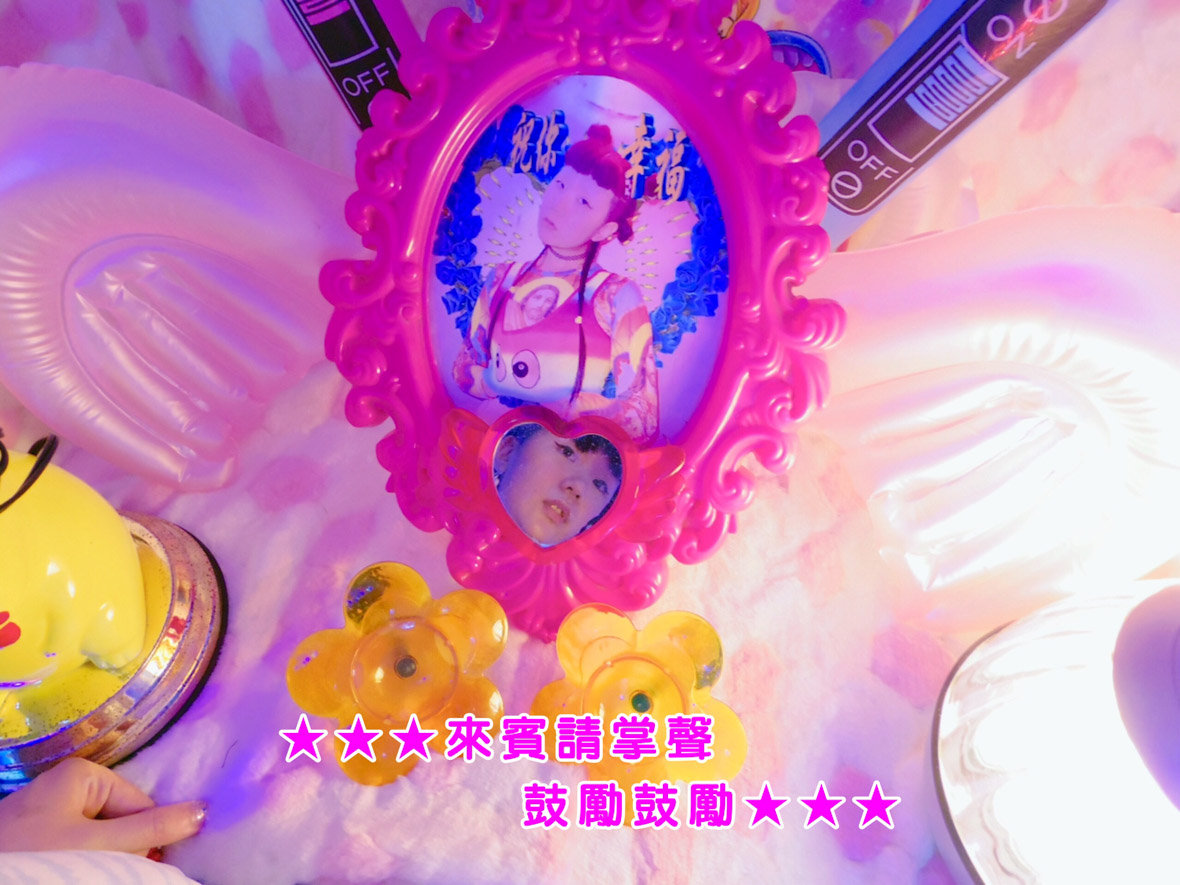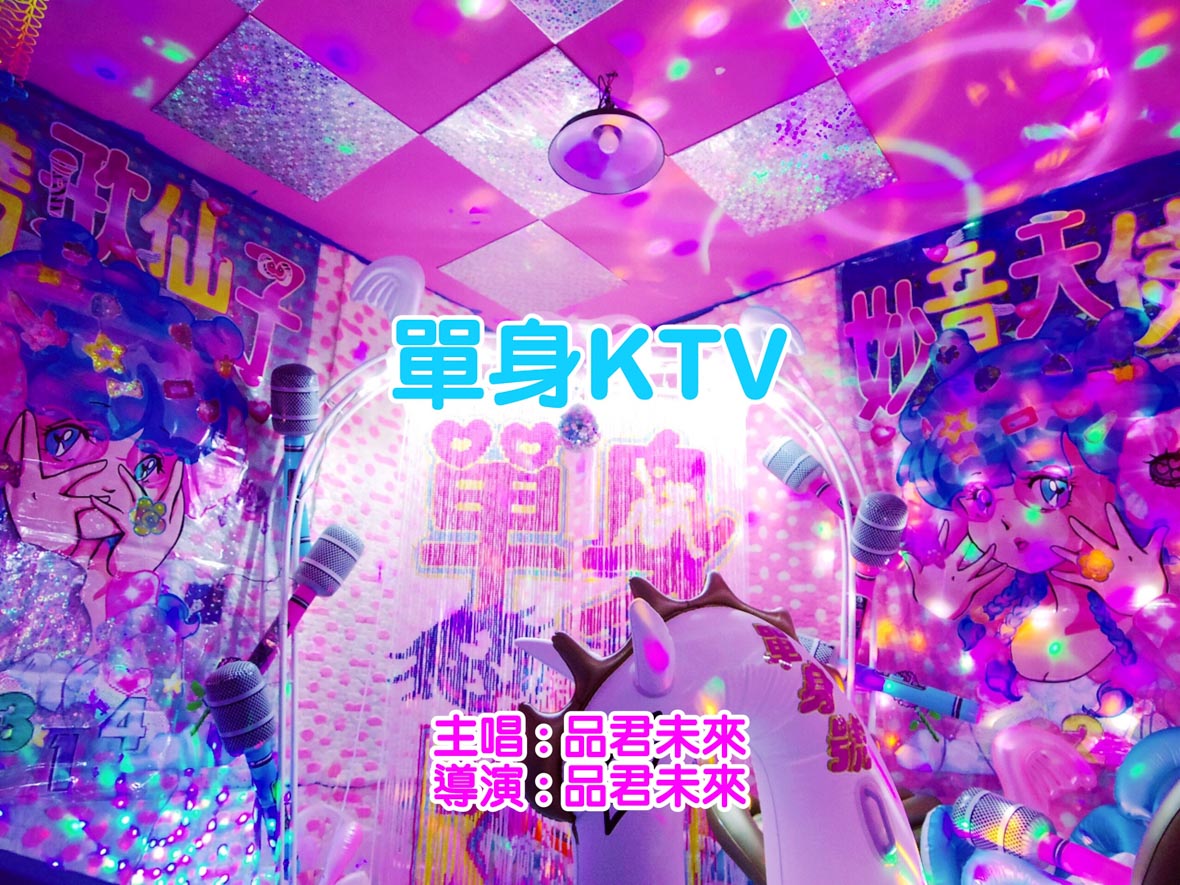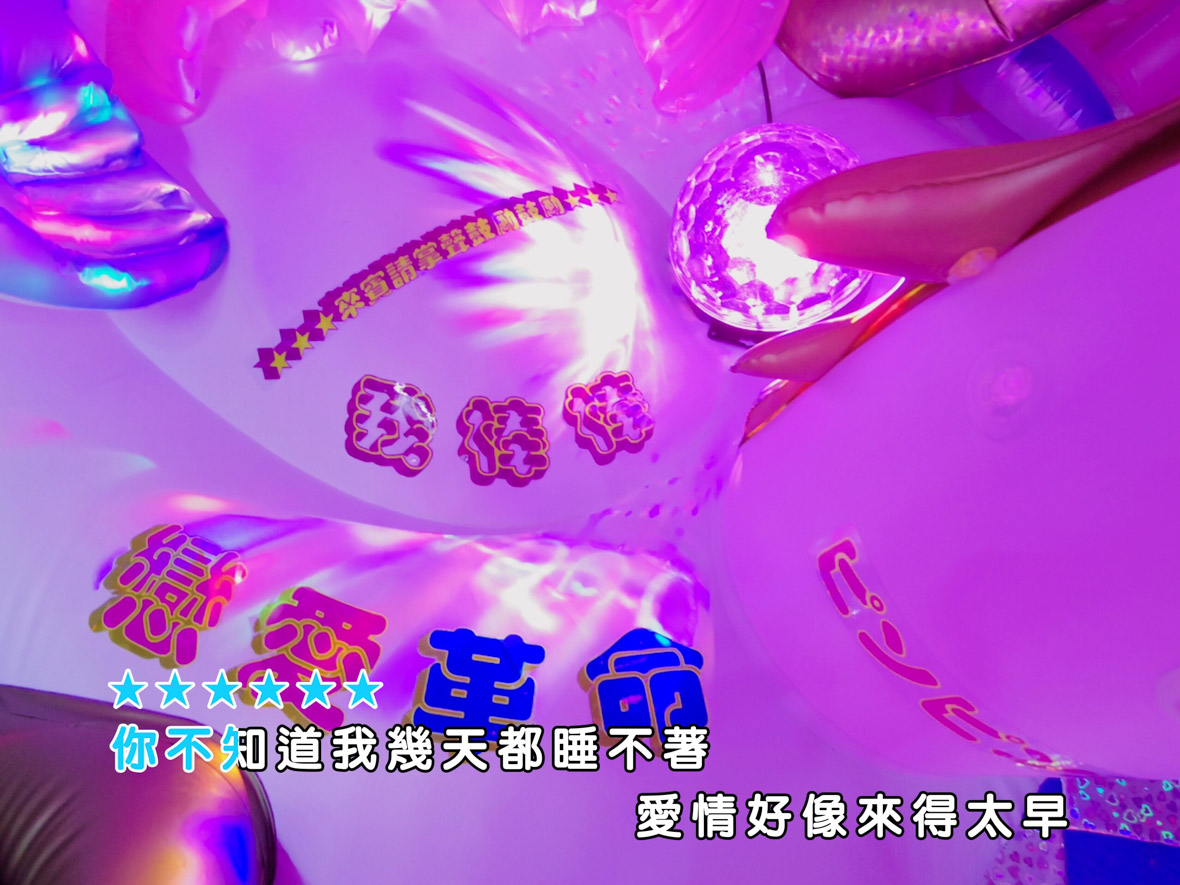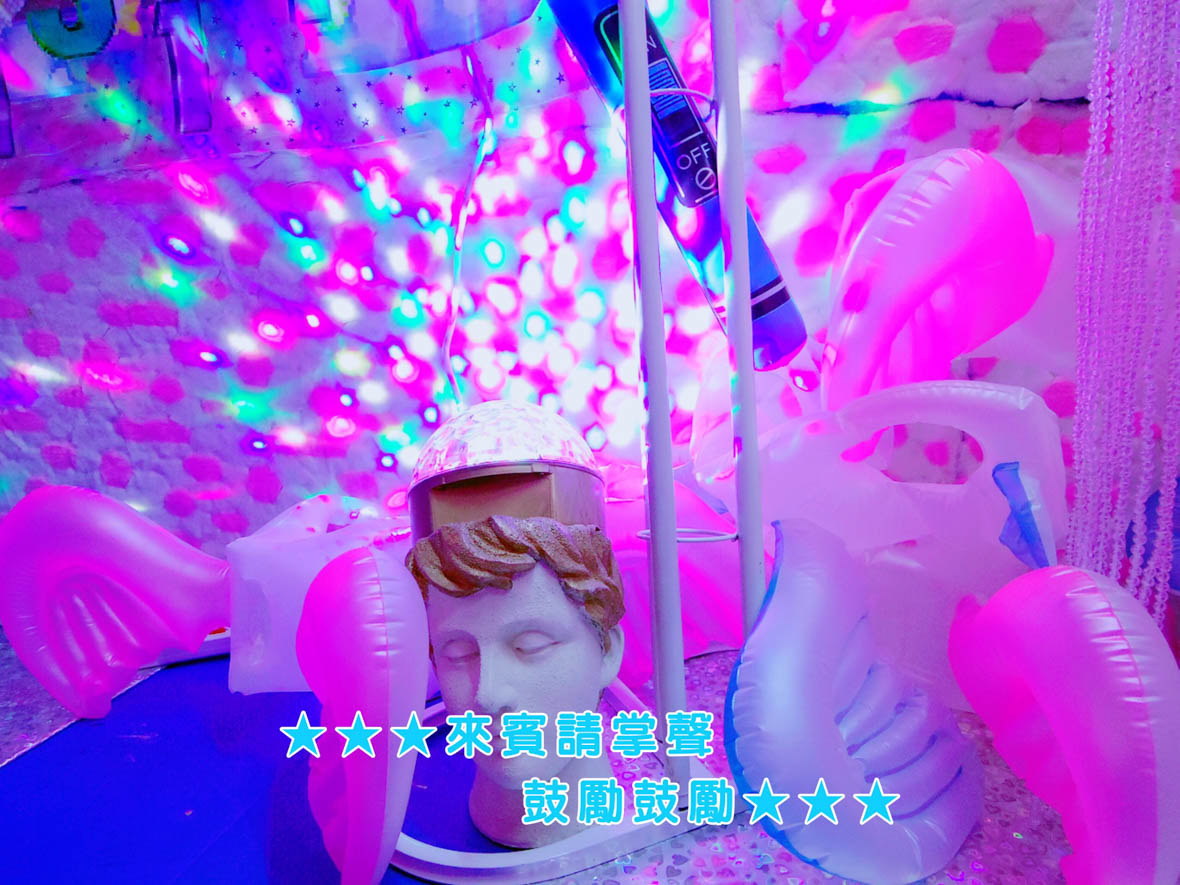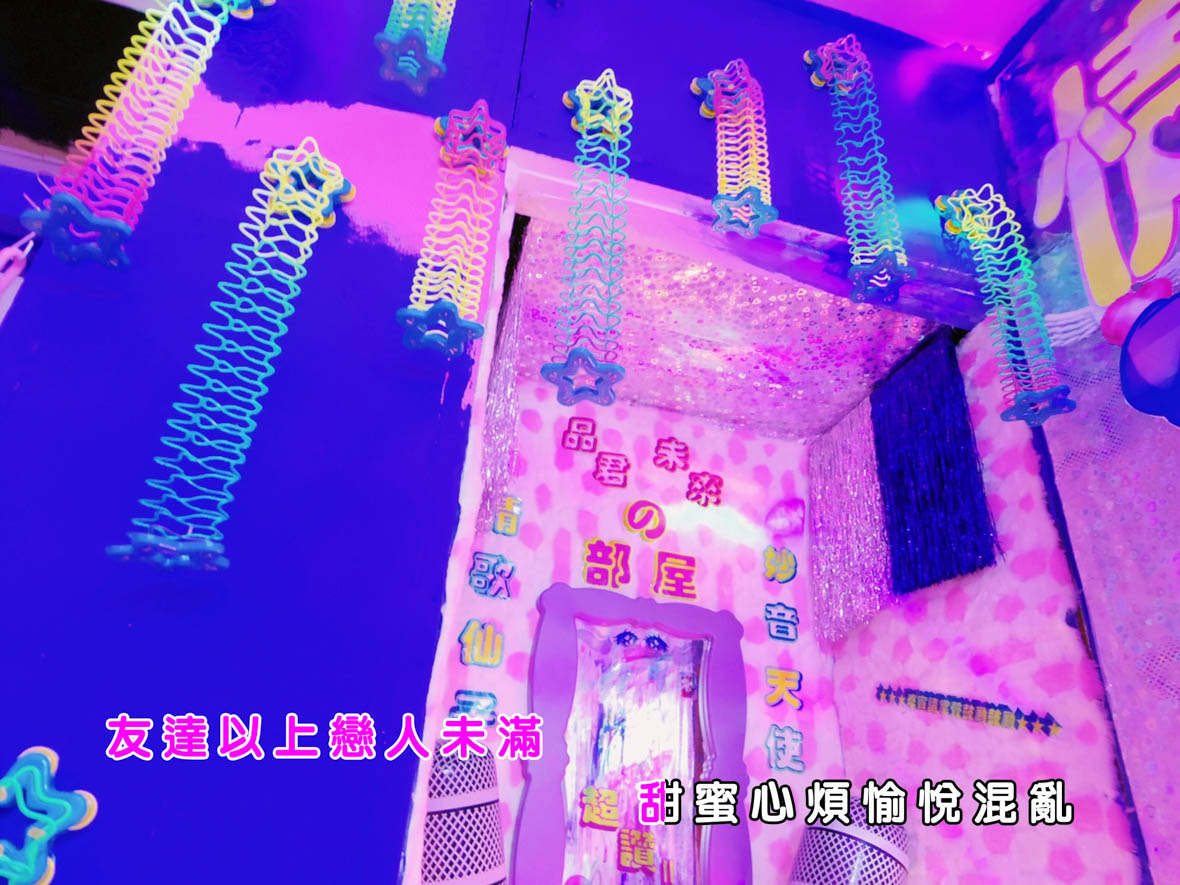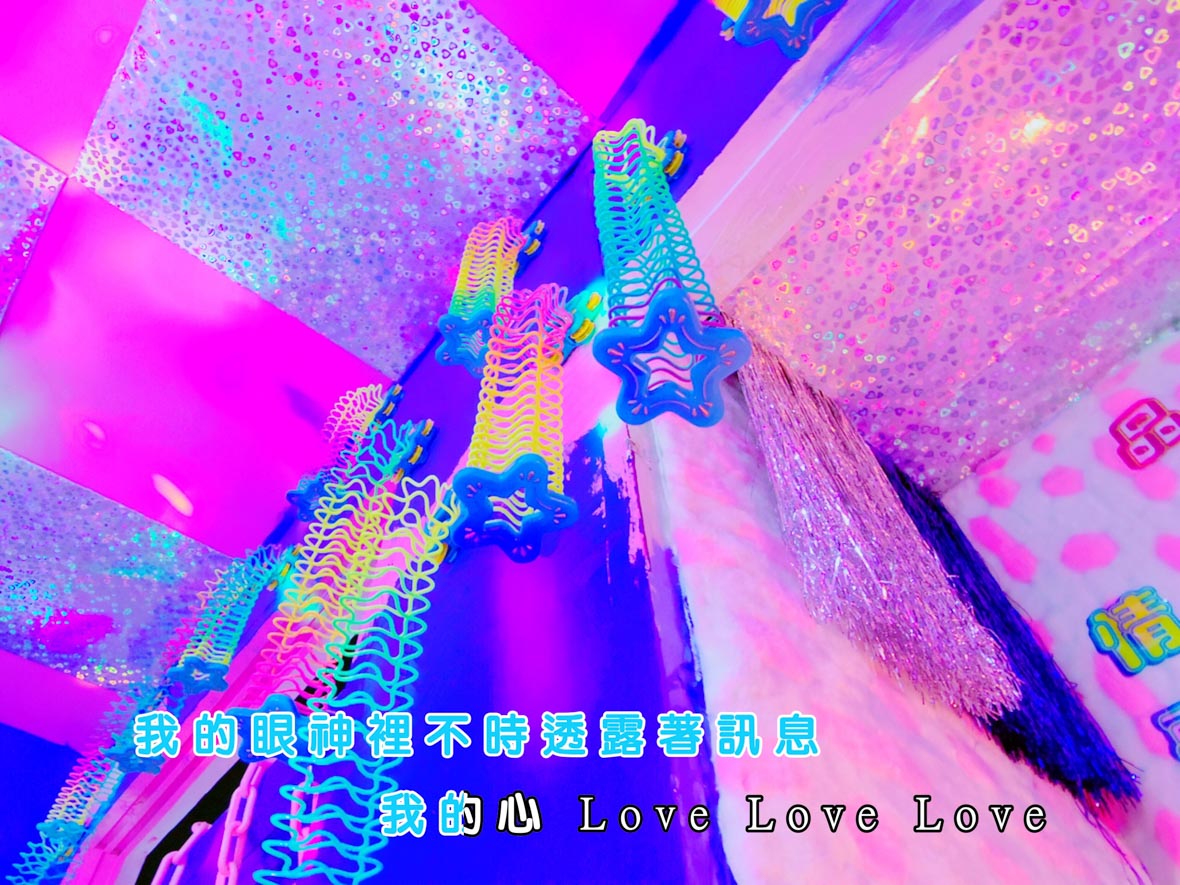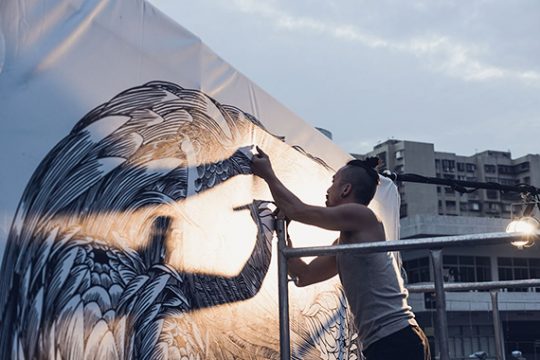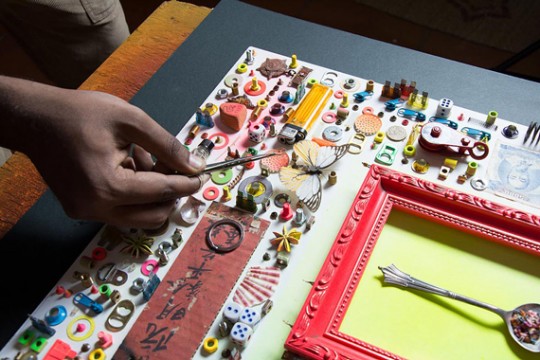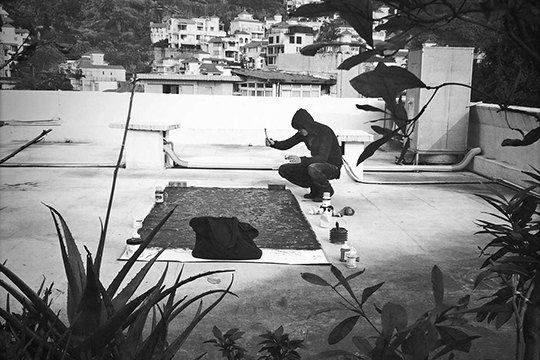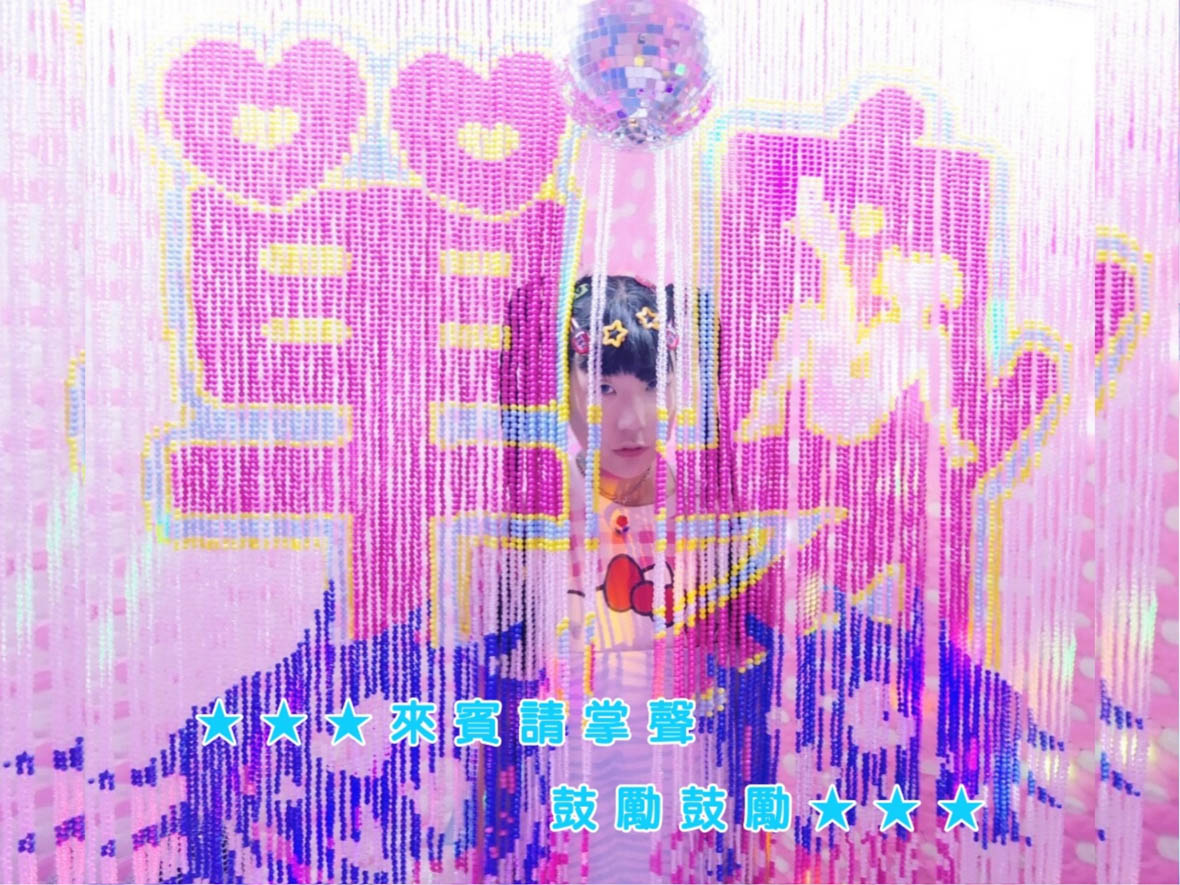
“Hi~~I’m✧*。٩(Guo Pinjun)و✧*。aka✧*。٩(Σ>-(Pin Jun★Future))♡→)و✧*aka。✧*。Pin Pin Future)و✧*。” – this is Taiwanese artist Guo Pinjun’s self-introduction. Through her preferred mediums of installation art, video, photos, and performing arts, Guo transforms Asian pop culture into a visual language of her very own. Her style is self-described as a blend of “infinite narcissism and an obsessive, cult-like sense of self-adoration.”
“嗨~我是✧*。٩(ˊ郭品君*)و✧*。aka✧*。٩(Σ>-(品君★未來)♡→)و✧*aka。✧*。٩( ピンピン未來)و✧*。” 这是一段来自台湾艺术家郭品君的自我介绍。装置、视觉、行为艺术是她创作的主要形式。她将大众流行文化做为视觉语言,呈现“无敌自恋自溺自爱的邪教教主风格 ”(来自品君自己的描述)。
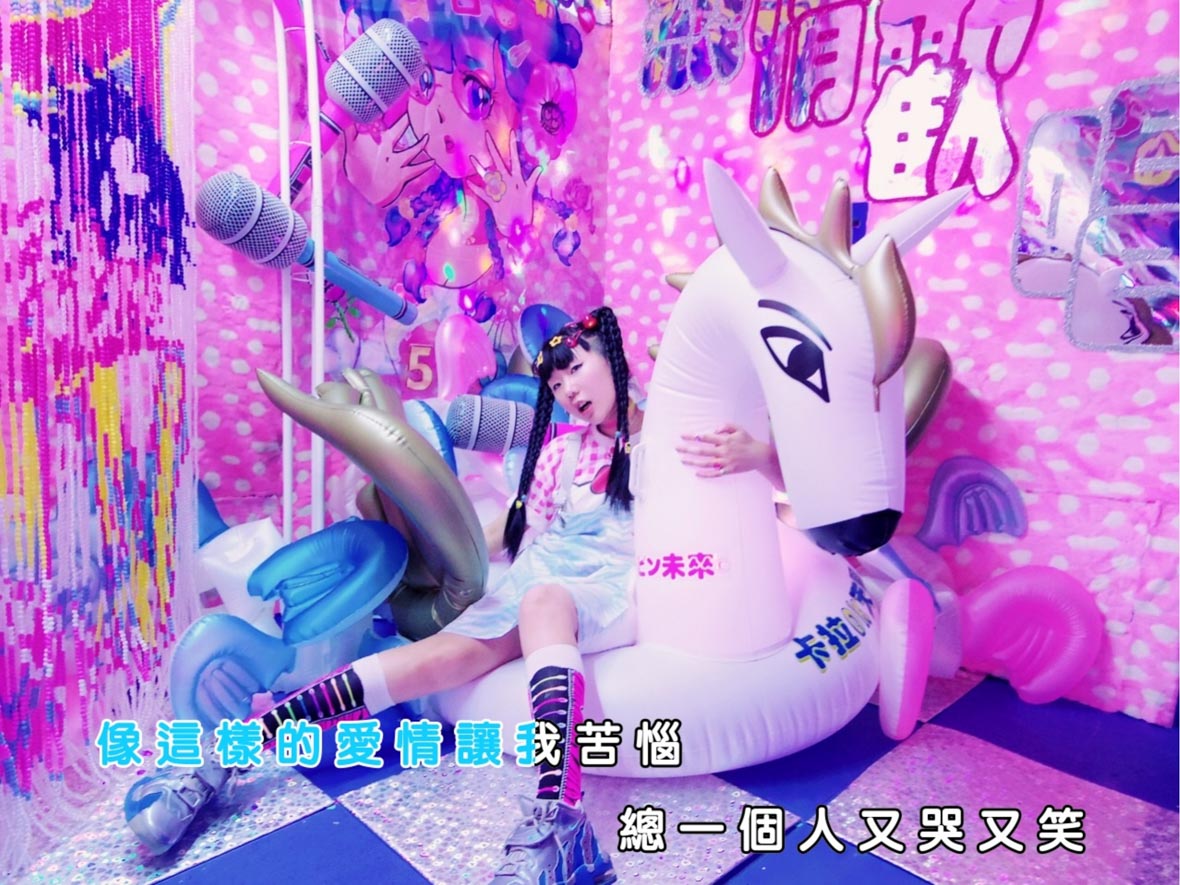
✧*。(Single KTV)✧* is Guo’s recent art piece, combining installation art with performing art. “People don’t need a reason to go sing karaoke in Taiwan. It doesn’t matter if you’re in a good mood or a bad mood. It doesn’t matter if you’re a good singer or a bad singer. You can just go out and sing,” she says. “One night, I went to sing with my friends, and I sang a bunch of sad, lovesick songs in a row, such as SHE’s ‘Not Yet Lovers’ and Twins’ ‘Jian Xi Ai Shen.’ I was getting really into it and dancing around when I noticed one of my friends was staring at me in a pitiful way. She asked me, ‘Pinjun, are you desperate to meet a boyfriend?’ It was then that this idea came to me. Does singing love songs, after seven years of being single, look really sad in front of people? Does being single mean I can’t sing love songs?” For this art piece, she set up a unique KTV booth in a public space, inviting strangers to join her or watch her sing karaoke. By doing this, Guo hopes to initiate a conversation on the subject of loneliness with her audience and explore how society views “single” people.
《✧*。(单身KTV)✧*》是郭品君最近创作的装置行为艺术作品。关于如何萌生创作这件作品的想法,品君这样告诉我们:“在台湾去唱卡拉ok是不需要理由的,不管你心情好或心情不好、唱的好或不好,只要找到机会就可以开唱,有一次和朋友约唱歌,我一连唱了好几首恋爱情歌,例如SHE的《恋人未满》、Twins的《见习爱神》…等等,当我唱的超投入跳超嗨的时候转头看到我朋友竟然用一个很悲悯的眼神看着我,然后问我说,“品君,你是不是很想要交男朋友阿?”,这时我脑中闪过的是,难道单身已经7年的我唱起情歌来的样子在别人眼中原来是很可悲的?难道单身就不能唱情歌吗?” 因此,她创作了这件装置作品,在公众地方建立了这个粉色主题的开放式KTV包厢,邀请陌生人和她一起唱K。品君希望通过与观众的互动和交流,测试大众对于单身这个身分的反应。
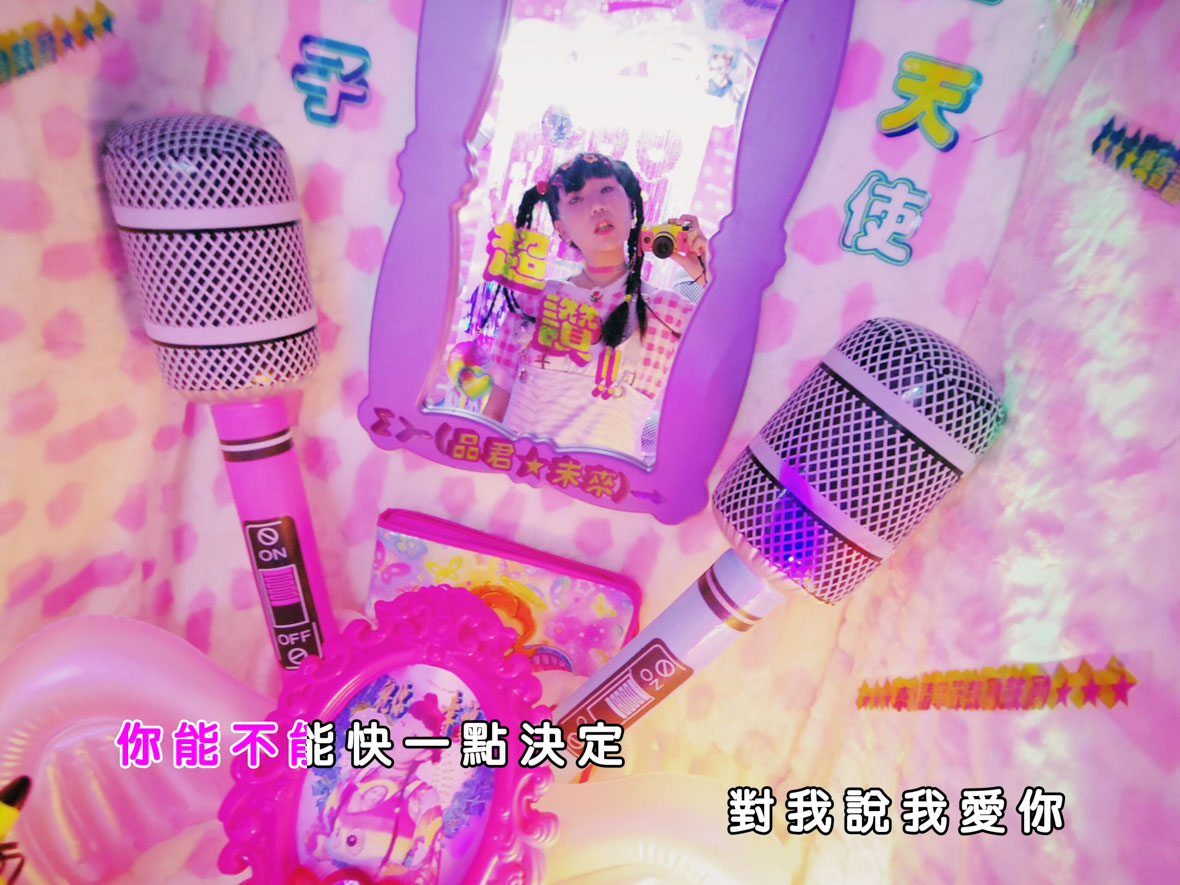
Taiwanese pop culture at the turn of the millennium is one of the most prevalent influences in Guo’s art. In the early 2000s, as Guo sought to figure out her own identity as a teenager, a Japanese craze was sweeping through Taiwan, introducing things like Ganguro fashion, old school Decora style, anime, and sticker photo booths. “The interesting thing is that I absorbed these elements of Japanese pop culture after Taiwan had localized it,” she says. “So in a way, my work is a fusion of Taiwanese and Japanese styles.”
千禧时期的台湾流行文化对品君创作影像风格带来很深的影响。从2000年开始,她渐渐进入脱离爸妈全权掌握,有点想要自己决定喜欢什么、爱追随流行的青少年时期,而当时台湾正在风靡一股非常强烈的哈日风潮。109辣妹、old school Decora视觉系、动漫、拍贴机等等的这些日本流行文化,影响着她的成长。“有趣的点在于,我所吸收的都是台湾‘在地化’过后的日本流行文化,因此从我的影像中可以看到的是一种台日混血的风格呈现。”
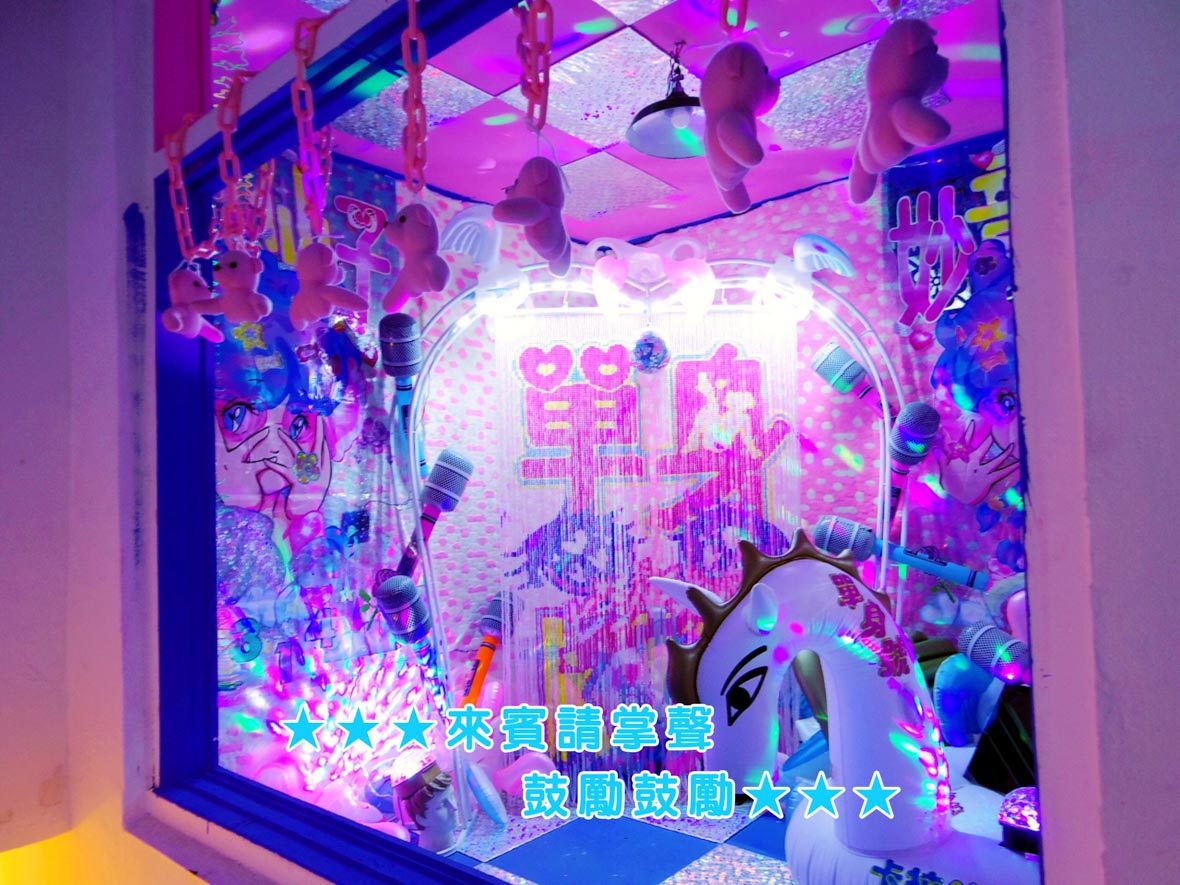
Aside from her own artworks, Guo was eager to share with us a list of some of her favorite modern creatives, including Japan’s Magma, Taiwanese designer JennyFax, British filmmaker Nadia Lee Cohen, Japan’s creative collective Chim↑Pom, and French conceptual artist Sophie Calle. “My favorite art is art that’s very decorative, with aesthetics that people might consider kitsch. I also enjoy the inclusion of some dark humor, a little playfulness, and a bit of craziness. My own work is also moving in this direction.”
品君还和我们分享了一些她最近注目的艺术家,有日本的Magma,台湾的旅日设计师JennyFax,英国的Nadia Lee Cohen,日本的艺术家团体Chim↑Pom, 和观念艺术家Sophie Calle。“我喜欢非常装饰性、媚俗、黑色幽默、有趣、带点疯狂行为的作品,我自己的作品也是朝这样的方向前进的。”
